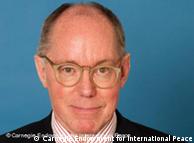In the old days before the first Gulf War, most nuclear export controls were pretty cut-and-dried: Exporters checked for items on a short ”trigger list” that could be used for making nuclear bomb fuel.
But after they learned what Iraq had secretly been up to for about a decade before 1991, the Nuclear Suppliers Group came up with a second list, Infcirc/254/Part 2, and it got into the tricky business of policing a panoply of dual-use goods sought by proliferators.The stream of dual-use goods is virtually endless, and so has been the internal debate at the NSG about whether items should be listed or not. That’s even more so right now, because as I explained in this report published by Carnegie last month, the NSG has launched a comprehensive review of both its lists, and the decisions it makes about what to control and how to do it will profoundly impact how we attack procurement threats in years to come.
One of the items which is not on the NSG dual-use list is a chemical substance which Iran has been keenly and furtively trying to import since the mid-1990s. This is anhydrous hydrogen fluoride, or AHF. (The term “anhydrous” is just a fancy way of saying that hydrogen fluoride [HF], otherwise known as hydrofluoric acid, is more or less pure having less than 400 ppm of water.) More
